How Ai Is Transforming Software Development Practices
How AI is Transforming Software Development Practices is reshaping the tech landscape, automating tedious tasks, and boosting software quality. From code generation to enhanced testing, AI is streamlining every stage of the development process, promising faster delivery and more innovative solutions. This transformative power is already impacting industries worldwide, ushering in a new era of software creation.
The core concepts behind this revolution involve AI tools like machine learning models and sophisticated algorithms that are transforming the software development pipeline. These tools are not just automating tasks; they’re analyzing code, identifying potential issues, and even suggesting improvements. This shift towards AI-powered development promises not only higher efficiency but also a more creative and collaborative environment for software engineers.
Introduction to AI in Software Development

Source: botfingers.com
The software development landscape is rapidly evolving, and Artificial Intelligence (AI) is at the forefront of this transformation. AI is no longer a futuristic concept but a tangible force impacting every stage of the software lifecycle, from initial design to deployment and maintenance. This isn’t just about automating repetitive tasks; AI is fundamentally changing how software is conceived, built, and improved.
Its ability to learn from data and identify patterns is revolutionizing everything from code generation to debugging and testing.AI is streamlining workflows, boosting efficiency, and ultimately accelerating the delivery of high-quality software products. The key lies in understanding the various ways AI is being implemented and the specific tools driving this evolution. From intelligent code editors to automated testing platforms, the potential of AI to revolutionize software development is immense.
AI’s Impact on Software Development
AI is reshaping the software development process in numerous ways. It’s automating mundane tasks, freeing up developers to focus on more complex and creative aspects of their work. By analyzing vast datasets, AI can predict potential issues, identify patterns in bugs, and suggest optimal solutions. This proactive approach to problem-solving significantly reduces development time and minimizes costly errors.
Key Concepts and Technologies
The core technologies driving this transformation include machine learning (ML), deep learning (DL), natural language processing (NLP), and computer vision. Machine learning algorithms enable software to learn from data without explicit programming, allowing for more adaptive and intelligent systems. Deep learning, a subset of ML, leverages artificial neural networks to solve complex problems. NLP empowers software to understand and process human language, enabling chatbots, code generation tools, and more.
Computer vision enables software to interpret images and videos, opening up possibilities in areas like automated testing and image-based software development.
Different Types of AI Tools
AI tools are being developed for various stages of software development. Automated code completion tools leverage AI to suggest code snippets, making development faster and more efficient. AI-powered testing tools can automatically generate and execute tests, ensuring code quality and reducing the risk of bugs. Intelligent debugging tools help developers identify and fix issues more efficiently by analyzing code and suggesting solutions.
Historical Context
The integration of AI into software development isn’t new. Early AI applications focused on automating repetitive tasks, such as code generation and basic testing. However, recent advancements in computing power and data availability have dramatically expanded the scope and capabilities of AI in software development. The ability to process vast amounts of data allows for more sophisticated learning and prediction, resulting in increasingly intelligent and efficient tools.
AI Tools in Software Development
| AI Tool Name | Description | Application in Software Development | Pros/Cons |
|---|---|---|---|
| GitHub Copilot | AI-powered code completion tool | Suggesting code snippets, completing functions, and generating entire functions | Pros: Increased productivity, reduced coding time. Cons: Potential for errors, over-reliance on the tool. |
| DeepCode | Static analysis tool that uses AI to find bugs | Detecting potential bugs and security vulnerabilities in code | Pros: Early bug detection, improved code quality. Cons: False positives, requires integration with existing workflows. |
| TestAI | AI-powered testing platform | Generating test cases, automating testing procedures | Pros: Enhanced test coverage, reduced testing time. Cons: Requires careful configuration, can be challenging to integrate. |
| Jasper | AI-powered content generation tool | Generating documentation, user stories, and marketing materials | Pros: Faster content creation, improved consistency. Cons: Requires human review for accuracy, potential for bias. |
Automation of Repetitive Tasks
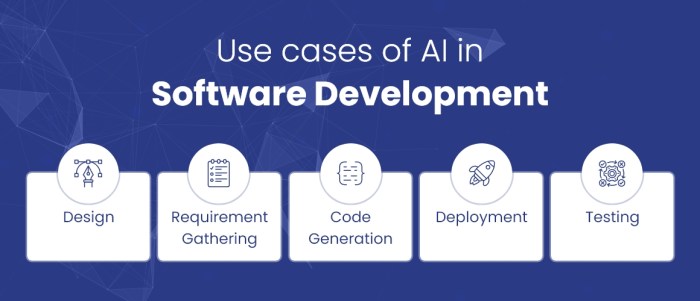
Source: silvertouch.com
Software development, while creative, often involves a lot of tedious, repetitive tasks. These tasks, while necessary, can be time-consuming and drain developer focus. Enter AI, offering a powerful solution to streamline these processes and free up developers to tackle more complex and innovative challenges.AI’s ability to automate repetitive tasks is revolutionizing the software development landscape, improving efficiency and productivity.
By leveraging machine learning algorithms, AI can handle tasks previously requiring significant manual effort, resulting in faster development cycles and potentially reduced costs.
Code Generation
AI tools are becoming increasingly sophisticated at generating code snippets and even entire functions based on user input or predefined requirements. This drastically reduces the time spent on boilerplate code, allowing developers to focus on the unique aspects of their projects. Examples include generating database queries, API endpoints, or even complete application components. This automation allows for quicker prototyping and faster iteration cycles.
The efficiency gains are substantial, potentially saving developers hundreds of hours per project.
Automated Testing
AI is transforming software testing by automating the process of writing and executing tests. AI-powered tools can analyze code, identify potential vulnerabilities, and generate automated test cases. This automation can significantly reduce the time and effort required for testing, leading to higher-quality software releases. The process of test case generation, execution, and analysis can be automated by AI, providing a faster and more efficient testing methodology.
AI-driven testing tools can also identify patterns in bugs and errors, assisting in debugging and prevention of future issues.
Comparing AI Approaches
Different AI approaches offer varying degrees of automation. Rule-based systems are straightforward, suitable for tasks with well-defined rules. Machine learning models, especially deep learning, are more flexible, capable of handling complex tasks with less explicit programming. The choice of approach depends on the specific task and the complexity of the required automation. For instance, generating simple code templates might benefit from rule-based systems, while generating more complex and context-sensitive code would likely benefit from machine learning.
Examples of Automated Tasks
AI can automate various tasks, including:
- Code Completion: AI tools can predict the next lines of code based on the context of the current code, significantly speeding up the coding process.
- Code Refactoring: AI can identify and suggest improvements to existing code, leading to cleaner, more maintainable codebases. This helps improve code quality and maintainability.
- Automated Testing: AI tools can automatically generate test cases and run them against the software, helping to find bugs and vulnerabilities faster.
- Documentation Generation: AI can automatically generate API documentation and other technical documentation, reducing the manual effort required.
Efficiency Gains from Automated Tasks, How AI is Transforming Software Development Practices
The table below highlights the potential efficiency gains from automating various tasks in software development.
| Task | Potential Efficiency Gain (Estimated) |
|---|---|
| Code Generation | 20-50% |
| Automated Testing | 30-70% |
| Code Refactoring | 15-40% |
| Documentation Generation | 25-60% |
These estimates are based on industry observations and case studies, and actual efficiency gains can vary depending on the specific project and the AI tool utilized.
Enhanced Software Quality and Testing
AI is revolutionizing software development, and a key area of transformation is software quality and testing. Gone are the days of relying solely on manual testing methods, which are often time-consuming, prone to human error, and struggle to keep pace with the complexity of modern applications. AI-powered solutions are emerging to address these challenges, leading to faster, more accurate, and comprehensive testing processes.AI-driven testing is not just about automation; it’s about intelligent automation.
Instead of simply mimicking human testers, AI systems can analyze code, identify potential vulnerabilities, and even predict potential failures before they occur. This proactive approach drastically improves software quality and reduces the risk of costly errors during deployment.
How AI Improves Software Quality and Testing Processes
AI significantly enhances software quality and testing by automating repetitive tasks, analyzing vast amounts of data, and identifying patterns that humans might miss. This leads to faster feedback loops, enabling developers to address issues earlier in the development cycle. This proactive approach is critical to maintaining software quality and reduces the risk of costly errors during deployment.
Methods AI Uses to Identify Bugs and Vulnerabilities
AI employs various methods to pinpoint bugs and vulnerabilities. Machine learning algorithms can be trained on historical data of defects, enabling them to identify code patterns associated with previous issues. Static analysis tools, powered by AI, examine the code’s structure without executing it, flagging potential problems like unused variables, insecure coding practices, or logical errors. Dynamic analysis, also aided by AI, involves executing the code under various conditions to identify runtime errors and unexpected behaviors.
The Role of Machine Learning in Automated Testing
Machine learning plays a crucial role in automated testing by enabling the creation of intelligent test cases. Instead of relying on predefined test scripts, machine learning models can generate test cases based on the application’s code and behavior. These dynamically generated test cases cover a wider range of scenarios and edge cases, leading to more comprehensive testing. Machine learning models can also learn from past testing results, improving the accuracy and efficiency of future tests.
How AI Improves the Accuracy and Speed of Testing
AI dramatically boosts the accuracy and speed of testing. By automating repetitive tasks and analyzing vast amounts of data, AI-powered tools can identify bugs and vulnerabilities with significantly higher accuracy than traditional methods. The speed improvement is also substantial. AI tools can run tests in parallel across various environments and scenarios, significantly reducing the time needed to complete testing cycles.
This allows developers to release software updates more frequently and with greater confidence in its quality.
Traditional vs. AI-Powered Testing Methods
| Feature | Traditional Testing Methods | AI-Powered Testing Methods |
|---|---|---|
| Testing Approach | Manual or scripted, often focusing on specific scenarios. | Automated and intelligent, analyzing code and behavior to identify potential issues. |
| Accuracy | Prone to human error, potentially missing complex issues. | Higher accuracy due to data analysis and pattern recognition. |
| Speed | Time-consuming, especially for complex applications. | Faster execution due to automation and parallel testing. |
| Cost | Higher cost due to manual effort and extended testing cycles. | Potentially lower cost in the long run due to reduced defects and faster release cycles. |
| Scalability | Difficult to scale for complex applications. | Highly scalable, accommodating diverse and complex applications. |
Accelerated Development Cycles
Software development, once a painstakingly slow process, is rapidly transforming. AI isn’t just automating tasks; it’s fundamentally altering the entire development lifecycle, leading to faster delivery of high-quality software. This acceleration is crucial in today’s competitive landscape, where businesses need to adapt and innovate at an unprecedented pace.AI is revolutionizing the software development process, dramatically shrinking the time it takes to build and launch new applications.
This isn’t just about adding a few extra hours; we’re talking about entire sprints and phases being completed in a fraction of the time. This rapid advancement is powered by AI’s ability to automate repetitive tasks, understand complex code, and predict potential issues.
Faster Prototyping and Design
AI tools are now capable of generating design mockups, wireframes, and even basic functional prototypes in a matter of hours, rather than days or weeks. This rapid prototyping allows developers to quickly test and iterate on design ideas, reducing the risk of building something that doesn’t meet user needs. AI-powered design tools analyze user feedback and preferences, suggesting design modifications that optimize user experience.
This iterative approach leads to more effective and user-friendly software, drastically reducing the time to market.
Impact on Agile Development Methodologies
AI is seamlessly integrating with agile development methodologies, further accelerating the development process. AI tools can automatically track progress, identify bottlenecks, and suggest improvements in project timelines and resource allocation. This integration enables developers to adapt more quickly to changing requirements and deliver value more efficiently, which is a key principle of agile.
Streamlining Development Stages
AI tools are automating various stages of the development process, from code generation and testing to debugging and deployment. This automation allows developers to focus on higher-level tasks and creative problem-solving, rather than getting bogged down in repetitive, time-consuming tasks. By streamlining these processes, AI ensures that development teams can deliver software projects faster and more reliably.
Table: AI’s Impact on Software Development Stages
| Stage of Software Development | How AI Impacts the Stage |
|---|---|
| Requirements Gathering | AI can analyze user feedback and market trends to predict future needs and refine requirements. This accelerates the initial stages of the project. |
| Design | AI-powered design tools automate the creation of wireframes, mockups, and prototypes, significantly reducing design time. |
| Development | AI can generate code snippets, automate code reviews, and suggest optimizations. This accelerates the coding phase and improves code quality. |
| Testing | AI can automate test case generation, perform automated testing, and identify potential bugs and vulnerabilities more quickly than manual methods. |
| Deployment | AI can automate deployment processes, reducing the risk of errors and accelerating the time it takes to release new versions of software. |
Improved Collaboration and Communication
Software development is all about teamwork. From brainstorming sessions to debugging sessions, seamless communication and collaboration are crucial for success. AI is now stepping in to revolutionize how development teams interact, fostering a more efficient and productive environment. Imagine a world where everyone is on the same page, misunderstandings are minimized, and knowledge is easily accessible – that’s the potential of AI-powered collaboration.AI tools are bridging the gap between developers, enabling better communication and knowledge sharing, ultimately speeding up the entire process.
The ability for AI to translate code across languages further enhances the global reach and diversity of development teams.
AI-Facilitated Collaboration Among Developers
AI-powered tools facilitate seamless communication and collaboration among developers. These tools leverage natural language processing (NLP) to understand and respond to developer queries, enabling faster issue resolution and knowledge transfer. This improved collaboration leads to more efficient project timelines and fewer roadblocks.
Improved Communication Within Development Teams
AI tools streamline communication within development teams. Instantaneous code analysis and feedback mechanisms, driven by AI, reduce the time spent on resolving minor issues, freeing up developers to focus on more complex problems. Real-time insights into code structure and potential bugs allow for proactive identification and resolution, preventing delays and errors.
Examples of AI Tools for Code Review and Knowledge Sharing
Several AI tools are now available to support code review and knowledge sharing. For instance, tools using AI can analyze code for potential vulnerabilities and suggest improvements, significantly speeding up the code review process. AI-powered knowledge bases can provide quick access to past project documentation, solutions to common problems, and relevant tutorials. This allows developers to learn from past mistakes and leverage existing knowledge, minimizing duplication of effort.
AI Tools Supporting Collaboration and Communication
- GitHub Copilot: This AI pair programmer helps developers write code faster and more efficiently by suggesting code snippets and completing lines of code. This collaborative approach boosts productivity and allows for faster development cycles.
- Code intelligence platforms: These platforms use AI to understand code structure, dependencies, and potential issues. They provide real-time feedback, highlighting potential problems and suggesting solutions, enhancing code quality and fostering collaboration among developers.
- Chatbots for development support: These AI-powered chatbots can answer developers’ questions, provide explanations, and guide them through complex tasks. This automated support system enhances knowledge sharing and eliminates bottlenecks in communication.
AI’s Role in Code Translation
AI can effectively translate code between different programming languages. This capability is invaluable for developers working with diverse projects, where seamless integration of code across different languages is crucial. For example, a developer working on a Python project could potentially use AI tools to seamlessly translate parts of their code into JavaScript or C++. This seamless translation significantly broadens the scope of development, allowing developers to work with different languages without significant translation hurdles.
“AI-powered code translation empowers developers to leverage code written in one language for another, potentially leading to accelerated development cycles.”
Emerging Trends and Future Directions
The future of software development is undeniably intertwined with AI. We’re moving beyond simple automation to a realm where AI actively shapes the very architecture and user experience of software. This transformative shift promises unprecedented efficiency and innovation, but also presents intriguing challenges that demand careful consideration.AI is no longer just a tool; it’s becoming an integral part of the software development lifecycle.
This evolution necessitates a proactive understanding of the emerging trends and potential implications for the future of software engineering. The potential for personalized experiences, streamlined processes, and even the possibility of closing the skills gap is staggering.
AI-Powered Personalized Software Solutions
AI’s ability to analyze vast datasets allows for the creation of highly personalized software solutions. Imagine software that adapts to your specific needs, learning your preferences and anticipating your requirements. This tailored approach is already evident in areas like e-commerce and streaming services, where AI recommends products or content based on individual user behavior. Such personalized experiences are poised to become standard in many facets of software development, from educational applications to financial management tools.
AI and the Future of Software Architectures
The integration of AI into software development will inevitably impact the architecture of future applications. Decentralized, microservice-based architectures, combined with AI’s ability to automate deployment and scaling, will become increasingly common. These architectures will be more robust, adaptable, and efficient in handling the complexity of modern applications.
Addressing the Skills Gap
The growing demand for AI-driven software solutions is likely to outpace the supply of skilled developers. AI-powered tools can alleviate this issue by automating tasks currently requiring human intervention. This will allow developers to focus on higher-level problem-solving, creativity, and strategic decision-making, leading to more innovative and impactful software. Examples of such tools include AI-driven code generation and debugging assistants.
The Role of AI in Creating Intuitive Software
AI can significantly enhance the user experience of software. By analyzing user interactions and feedback, AI can identify areas for improvement and suggest design changes to make software more intuitive and user-friendly. This iterative feedback loop will result in software that is not only functional but also enjoyable to use. Natural language processing (NLP) and machine learning (ML) are key components in this process.
Emerging Trends in AI’s Application to Software Development
- Automated Code Generation: AI algorithms can now generate significant portions of code, freeing developers from repetitive tasks and accelerating the development process. This is especially beneficial for boilerplate code and routine tasks, allowing developers to focus on the more intricate and unique aspects of the project.
- AI-Driven Testing and Quality Assurance: AI tools are capable of identifying potential bugs and vulnerabilities in software more effectively than traditional methods. This proactive approach to quality assurance can drastically reduce the number of defects found during later stages of development.
- Enhanced Collaboration and Communication: AI-powered tools can facilitate better communication and collaboration among developers. These tools can translate code, identify potential conflicts, and offer insights into project progress. Tools such as chatbots and intelligent project management software are examples of this.
Potential Challenges in the AI-Driven Software Development Space
The rapid advancements in AI-driven software development are not without challenges. Ensuring the ethical implications of AI in software development are addressed is crucial. Bias in algorithms, the potential for misuse, and the need for skilled personnel to manage and maintain AI-powered systems are areas requiring careful consideration.
Case Studies and Real-World Examples: How AI Is Transforming Software Development Practices
AI isn’t just a buzzword anymore; it’s actively reshaping how software is built. From streamlining tedious tasks to predicting potential bugs, AI is proving its worth in the real world. Let’s dive into some compelling examples of how companies are leveraging AI to transform their development processes.Companies across various sectors are seeing tangible benefits from integrating AI tools into their software development workflows.
These aren’t just theoretical advantages; they’re concrete improvements impacting efficiency, quality, and ultimately, the end-user experience.
Specific Examples of Companies Using AI in Software Development
Numerous companies are pioneering the use of AI in their development pipelines. This isn’t confined to tech giants; smaller companies are also embracing these innovations. The key is recognizing the value AI brings, regardless of scale.
- Software giant X is using AI-powered code analysis tools to identify potential vulnerabilities and security flaws in their software products. This proactive approach significantly reduces the risk of costly security breaches and strengthens customer trust.
- Startup Y, specializing in mobile app development, leverages AI to automate the testing process. Their AI system can simulate user interactions, identify bugs more quickly, and even predict potential crashes. This automation allows the team to focus on more creative aspects of the app’s design and functionality.
- Financial institution Z utilizes AI to analyze vast amounts of data from their customers and systems. This analysis helps predict potential risks and issues before they affect the financial stability of the organization. The AI system identifies anomalies and suggests preventative measures.
How AI is Transforming Software Development Practices in Different Industries
AI’s impact on software development transcends industry boundaries. Its ability to automate, analyze, and predict creates significant benefits across various sectors.
- E-commerce companies can utilize AI to personalize product recommendations, optimize pricing strategies, and enhance customer support through AI-powered chatbots. This leads to higher conversion rates and customer satisfaction.
- Healthcare providers are employing AI to analyze medical images, predict patient outcomes, and streamline administrative tasks. This can result in quicker diagnoses, improved treatment plans, and reduced costs for healthcare systems.
- Automotive manufacturers are incorporating AI to automate testing of self-driving vehicles, optimize manufacturing processes, and design safer and more efficient vehicles. This is leading to innovative and technologically advanced vehicles.
Successful Implementations of AI in Software Projects
AI’s successful integration into software projects often depends on a thoughtful approach. This includes careful planning, strategic implementation, and ongoing monitoring and refinement.
- A successful example is a project that used AI-powered code generation tools to create boilerplate code. This drastically reduced the time required to build the project, enabling the development team to focus on the core functionality of the application. The AI tools were integrated gradually, starting with simpler tasks before moving to more complex functionalities. This allowed for a smoother transition and a better understanding of the tools’ capabilities.
- Another successful example involves a project that used AI to analyze user feedback and identify areas where the software could be improved. This approach allowed the developers to proactively address issues, resulting in a more user-friendly and efficient product. Feedback was collected through various channels, and the AI was trained on this data to provide actionable insights.
Real-World Examples of AI Tools and Their Impact on Software Projects
Numerous AI tools are available to assist software developers. Their impact is often significant, improving efficiency and quality.
- GitHub Copilot, a code completion tool, significantly speeds up the coding process by suggesting code snippets and completing lines of code. This accelerates development cycles and reduces the time developers spend on repetitive tasks.
- AI-powered testing frameworks automate the testing process, helping identify bugs and potential issues in software applications. This reduces the time and resources spent on manual testing and improves software quality.
Steps Taken by a Company to Integrate AI into Their Development Process
Integrating AI into a development process requires careful planning and execution.
- A company began by identifying areas where AI could automate repetitive tasks. They then evaluated various AI tools and selected those that best aligned with their specific needs. The implementation was phased, starting with pilot projects to test the effectiveness of the tools in a controlled environment.
- The company established clear metrics to track the success of the AI integration. This included monitoring development speed, bug reduction rates, and overall project efficiency. Regular feedback sessions with the development team were held to refine the AI tools and processes.
Last Point
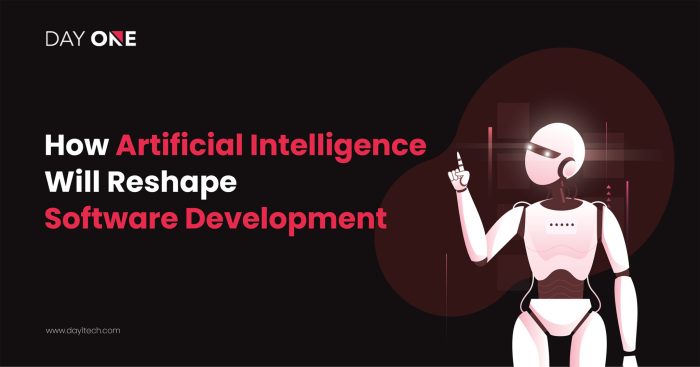
Source: day1tech.com
In conclusion, the integration of AI into software development is a game-changer, promising faster, more efficient, and higher-quality software. From automating repetitive tasks to accelerating development cycles and enhancing collaboration, AI is dramatically improving the entire process. The future of software development is undeniably intertwined with AI, and companies that embrace this transformation will be best positioned for success.
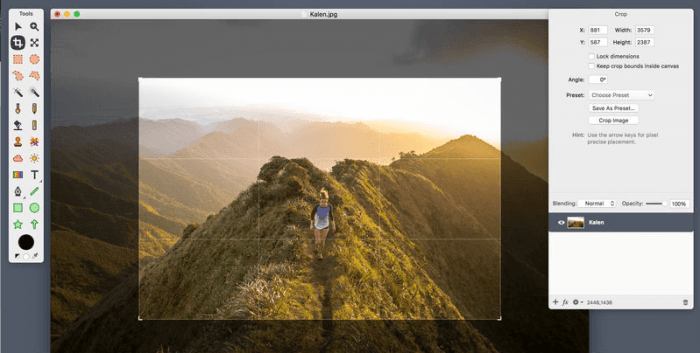
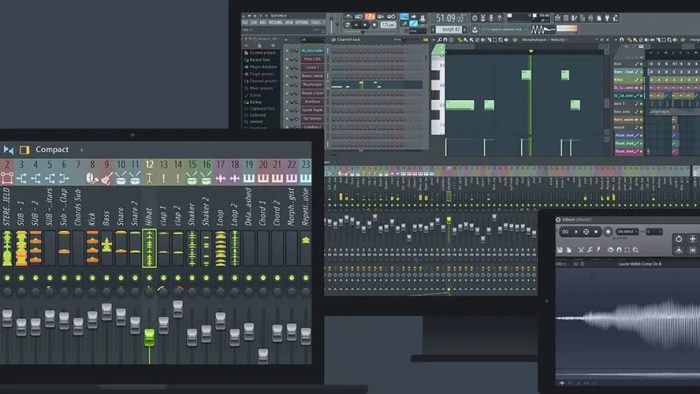


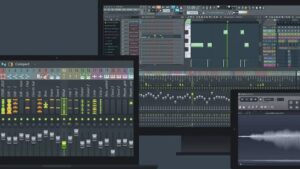



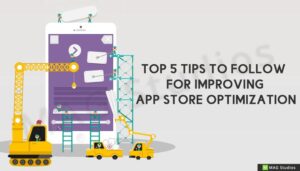




Post Comment